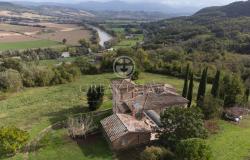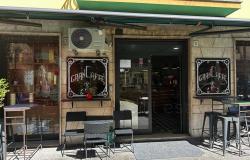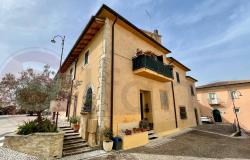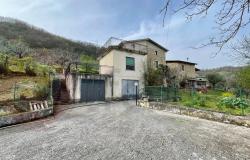 The rediscovered fragment of a long-lost painting testifying to the Borgia pope's love affair with his beautiful teenage mistress is the focus of a new exhibit in Rome.
The rediscovered fragment of a long-lost painting testifying to the Borgia pope's love affair with his beautiful teenage mistress is the focus of a new exhibit in Rome.
The painting, which depicts a glowing Baby Jesus, originally formed part of a fresco that adorned the walls of Pope Alexander VI's personal chambers.
Completed in 1492-3 by Renaissance artist Bernardo di Betto, better known as Pinturicchio, the original painting showed the notorious Borgia pope, 62, kneeling in adoration before a Madonna and child.
While it was common for artists to weave pontiffs and cardinals into their religious paintings, Alexander VI's decision to have his 18-year-old mistress, Giulia Farnese, pose as the Virgin Mary caused quite a stir, even at the time.
In fact, less than 100 years later, the painting had already acquired legendary status, occasioning remark by Giorgio Vasari in his Lives of the Artists:
"Above the door of a room in the Borgia apartments, Pinturicchio painted Signora Giulia Farnese as Our Lady and, in the same painting, put the head of Pope Alexander adoring her," he wrote.
However, despite rumours of the painting's existence, it remained a closely guarded secret from its inception, and not even Vasari was convinced it was anything more than a myth.
Immediately after Pope Alexander VI's death in 1503, the fresco was hidden, first by a wall hanging and then by another painting.
Taking over the papacy 150 years later, Pope Alexander VII ordered the fresco torn down and the section showing his notorious predecessor destroyed.
Yet the pontiff allowed the other two fragments - one showing Giulia Farnese, the other an unknown baby - to survive, perhaps because of their beauty.
But that was the final word on the risqué fresco for centuries, although it continued to draw speculation among art historians.
The recent discovery and identification of the fragments is largely the result of a determined search by an art history professor from Perugia University, Franco Ivan Nucciarelli.
Nucciarelli, a Pinturicchio expert, first tracked down a copy of the original painting, commissioned by the Marquis of Mantua Francesco Gonzaga in the early 1500s.
Hoping to gain favour with the Farnese family, the marquis commissioned the copy from a local artist, Pietro Facchetti, who reportedly gained access to the papal apartments by bribing the pontiff's master of chambers.
Upon seeing the Facchetti copy some decades back, Rome historian Giovanni Incisa della Rocchetta immediately recognized two painting fragments that had been in his family for centuries.
But the fragments had themselves been sold many years before and it was only in 2004 that Nucciarelli finally managed to track them down to a Milanese collector and confirm they were indeed fragments from the original fresco.
Both paintings are being renovated and studied, but only the fragment showing the Baby Jesus will go on show.
Renamed the Jesus of the Hands - because the hands of Alexander VI and his mistress can be seen at the edge of the fragment - the painting will be the focus of its own exhibition at Palazzo Venezia, testifying to its importance.
It will be accompanied by a five-part multimedia installation, explaining the turbulent history of the painting, its subjects and its creator.
The show opens in Palazzo Venezia on Friday and runs until September 9.









